Cycling is often held up as an easy and effective way to reduce emissions to help curtail the devastating effects of climate change.
You don’t have to look far to spot examples of this. Cycling became a talking point at COP26, where many groups and individuals at the summit were espousing the potential of cycling as a low-emissions mode of transport, even if it wasn’t on the official agenda.
But there is a problem – compared to other sectors, the cycling industry has been slow to address (or even acknowledge) its own impact.
While the act of riding a bike is low impact, the narrative around cycling and the climate rarely acknowledges the environmental harm caused by the extraction of materials, the production of bikes and the shipping of products around the world.
Throw the relentless development of new bikes, clothing and products into the mix and the problem is even worse.
There are, of course, many examples of cycling companies increasing the amount of recycled materials in their products and moving towards carbon offsetting. But a lack of transparency about emissions and of solid commitments to reducing environmental impact can make the cycling industry feel behind when compared to other sectors.
But is this changing? And is the cycling industry finally getting real about its environmental impact?
This year, there have been a number of initiatives from companies and organisations that suggest the tide could be turning.
Collective commitments
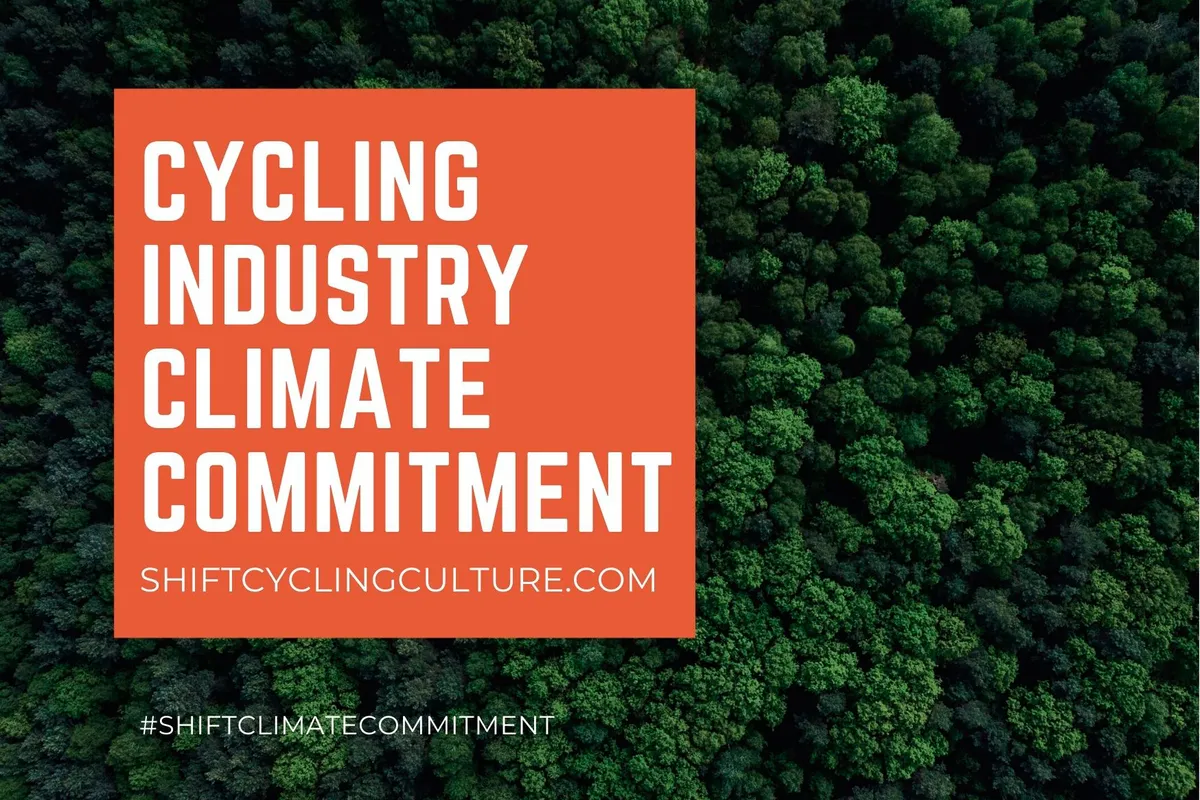
One of the most notable acts was an open letter signed by 15 cycling companies and released just before COP26.
Organised by Shift Cycling Culture – a non-profit working to make the future of cycling more sustainable – the Climate Commitment letter binds signees to two major commitments.
First, they will disclose their Scope 1 and Scope 2 greenhouse gas emissions by 2023. Scope 1 and Scope 2 refer to emissions direct from owned or controlled sources and indirect emissions, such as those from energy suppliers.
Second, the commitment requires brands to reduce their CO2 emissions by 55 per cent by 2030.
This mirrors the target outlined by the European Union in April this year, which was updated from the original commitment made as part of the Paris Agreement in 2016 to reduce emissions by 40 per cent by 2030, compared to 1990 levels.
The idea for the letter germinated from talks Shift Cycling Culture began with people in the cycling industry around this time last year.
Jane Dennyson, one of Shift Cycling Culture’s directors, says they put out an open request on social media for people in the industry to join a Zoom call to talk about sustainability in cycling.
“At that point,” Dennyson explains, “we just wanted to get a bit of a benchmark of where people were at. We were very aware that there is a massive industry that sits behind the bicycle and everything that goes with it that wasn’t really addressing its negative impact at the time. So we wanted to know how we could inspire change in this area.”
With about 100 people on the call, from product designers to managers and people working in communications, Dennyson says they had every area of the industry represented.
Asked what challenges there were in addressing sustainability within their organisations, two points raised by those on the call stood out to Shift Cycling Culture.
One was that the industry lacks a collective body and the other was that sustainability was not seen as a strategic concern.
Dennyson says Shift Cycling Culture “‘arrogantly” thought they could sort this out.
“We reached out to as many leaders of big brands as we could and said, ‘will you join us and the world’s biggest cycling companies to talk about sustainability and what it means for business from a strategic point of view?’”
This led to Shift Cycling Culture leading bi-monthly meetings with chief executives from companies such as Rapha, Schwalbe, Assos, Brompton and Riese & Müller to facilitate conversations around action on climate change and to emphasise its importance for business.
Dennyson says the group also invited an investment banker along to one of the meetings “who basically said, ‘we don’t look at companies that aren’t addressing sustainability because it’s too much of a risk if they’re not looking ahead and thinking about what the future looks like for them’.”
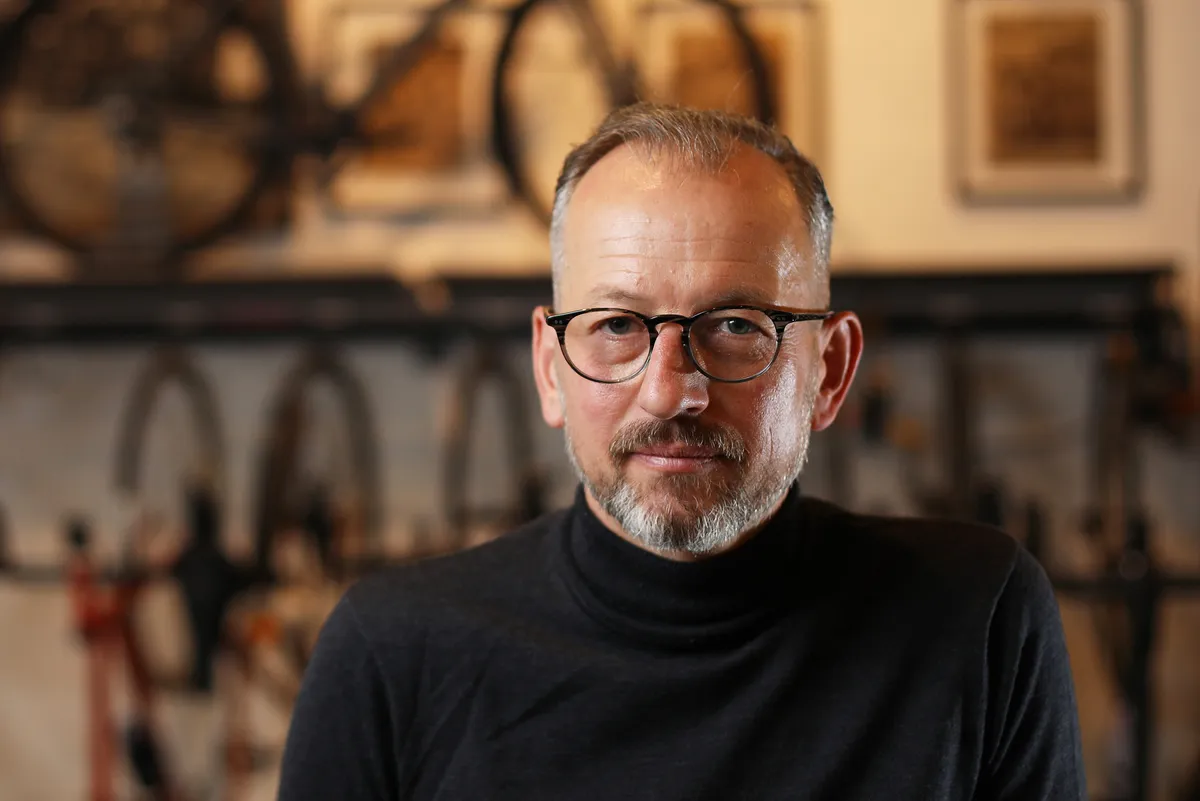
Dennyson says Simon Mottram, who recently announced he is stepping down as Rapha’s CEO, also spoke about his own personal journey in regard to climate change and the confluence of climate action and business.
“The penny finally dropped,” for Mottram, Dennyson says, “that we’re not even going to have a planet to do business on.”
While many will see such a statement as rather self-interested and blind to the devastating effects of climate change already faced by people across the globe, the realisation of the importance of climate action from a business perspective did get companies thinking about what they could do.
Fast forward to June this year and the brands Shift Cycling Culture was talking to wanted to know what steps they could take.
In order to reduce emissions, one major area cycling companies – and companies across all sectors – need to address is supply chains.
“Basically, 95 per cent of the negative impact of their organisations comes from the supply chain. So in order for them to really address the impact, we need their supply chain to change,” says Dennyson.
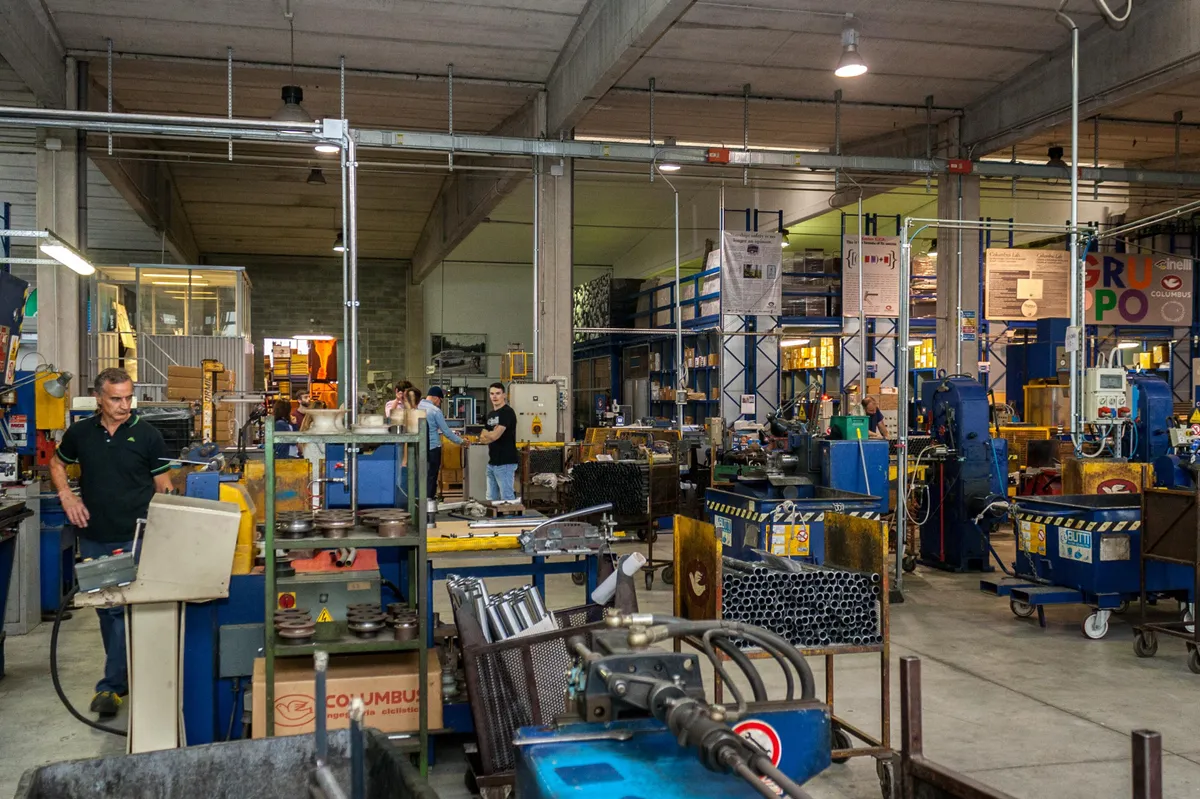
Shift Cycling Culture reached out to some big suppliers, who said their customers weren’t asking them to do anything differently.
It then went back to the brands, suggesting they draft a letter as a means to show companies in their supply chains that they were getting their own houses in order – a necessary step before asking their top 10 suppliers to start looking at reducing emissions.
Dennyson says that one criticism the letter has received is the focus on Scope 1 and Scope 2 emissions, and the omission of Scope 3 emissions. These cover emissions caused by supply chains and products when they are in use, and are included in goals for net-zero.
This does seem odd considering the admittance of the huge impact of supply chains from Dennyson and in the letter itself.
However, Dennyson says “really, we brought this down to the lowest common denominator, so as many companies as possible – wherever they are in their journey – can get on board.”
Due to the decentralised nature of modern production and the large numbers of suppliers involved in supply chains, calculating Scope 3 emissions – let alone cutting them – is a huge task.
But, Dennyson says since the letter was released 30 more companies have signed it, including suppliers, so the tactic of brands showing willingness first seems to have worked.
How will the brands reduce emissions?
What will the signees of the Climate Commitment letter do to reduce their emissions by 55 per cent by 2030?
The letter says they will reduce emissions related to production; create products that will last longer; work with consumers to extend the lifetime of products; and develop a closed-loop system to recover materials.
Dennyson says the concrete action brands will take to achieve these goals will become apparent in due course: “In terms of reduction, that really comes from the carbon report,” which the brands have agreed to release in 2023.
This is because, “you take your top-impact areas and dig into the hot spots, break those down, and ask if there are any quick wins. For instance, if they switch their factories to renewable energy, that’s going to have a massive impact.”
Trek’s sustainability report
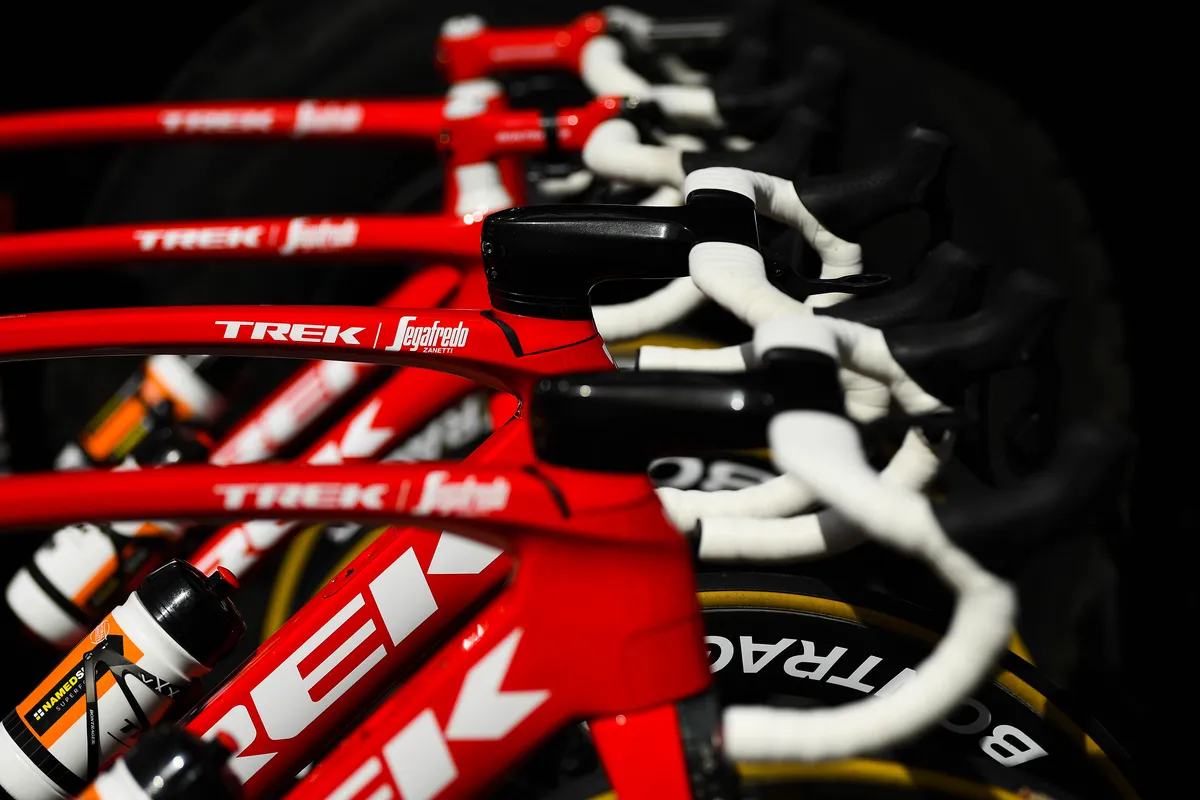
Trek has independently begun a similar journey, giving a sense of what we could expect.
The manufacturer released its first sustainability report in July this year, providing an audit of a single year of Scope 1, 2 and 3 emissions.
Trek isn’t the first brand to lift the lid on the carbon footprint of its activities.
There is an oft-cited Specialized report from 2014 – which one would hope is now firmly out of date considering the brand’s environmental commitments – and a report from Riese & Müller, one of the brands that signed the Climate Commitment open letter.
However, Trek’s report is the most recent and is a rare example of a large cycling brand outlining serious commitments to reducing emissions.
Eric Bjorling, Trek’s director of brand, is upfront about the position the cycling industry holds when it comes to emissions:
“The bike industry sometimes gets a bit of a free pass on environmentalism. We’re not the oil or automobile industries – or a better-known perpetrator, for want of a better word. But we’re the bike industry, and there’s still a very real carbon footprint there.”
Trek worked with WAP Sustainability Consultancy, which looked at carbon emissions across the company’s activity.
“They did a life-cycle analysis of a lot of stuff we were working on,” Bjorling explains, “just so we could consider where we were at as a company, and where our biggest opportunities lay for improvement.”
Similar to the sequence of events outlined in the Climate Commitment letter, the report then led Trek to formulate a 10-step plan to reduce emissions.
In the report, Trek says it aims to reduce air freight by 75 per cent compared to pre-2020 levels by 2024.
The brand is looking to consolidate orders to retailers into single shipments where possible by 2024. It also wants to switch to 100 per cent renewable energy for its owned facilities by 2023.
Trek also says it is setting up the Trek Foundation to protect places people ride and to help build infrastructure, which should in theory help encourage people to use bikes more.
Trek is keen to highlight how it has already begun taking steps towards these targets, saying it has started consolidating shipments and using renewable energy, as well as reducing plastic.
The report can be seen as a set of commitments as well as an opportunity for the brand to shine a positive light on what it’s already doing.
What is the carbon footprint of Trek bikes?
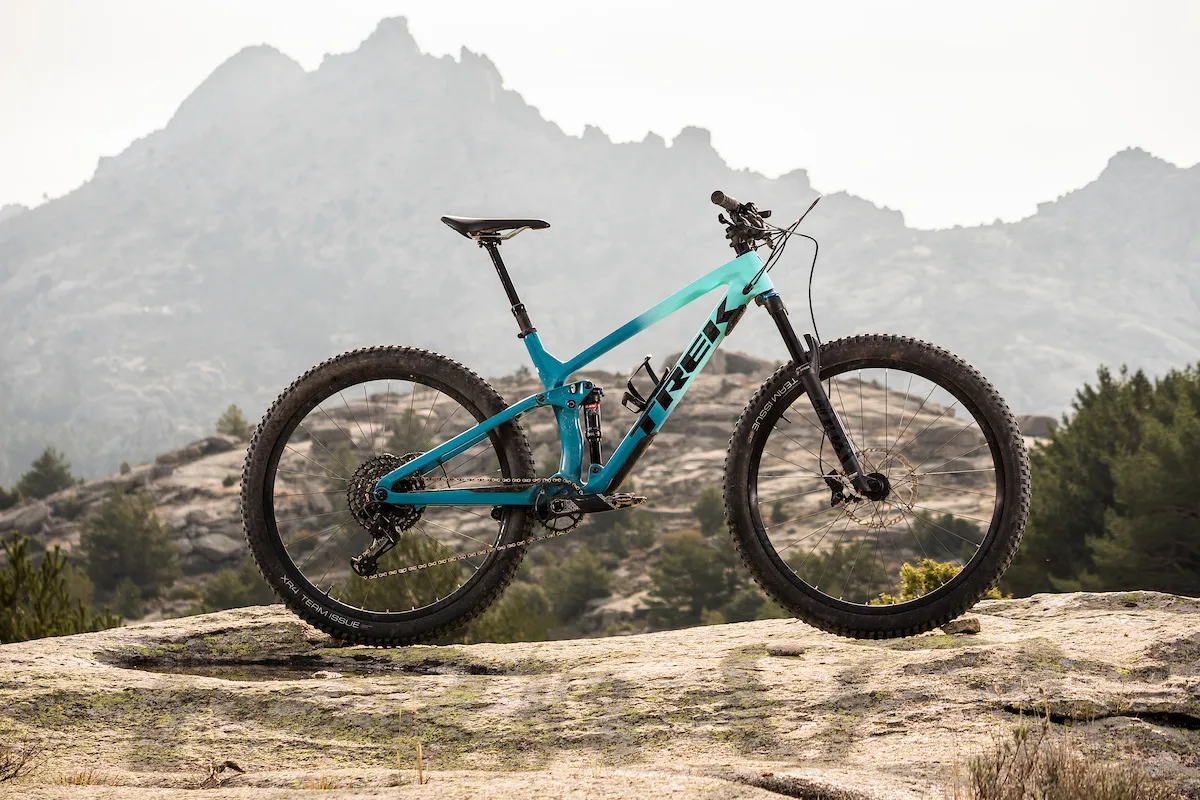
A major focus of the report is the carbon footprint of manufacturing four different bikes: the Trek Marlin; Trek Madone; Trek Fuel EX; and the Trek Rail.
Bjorling says this selection of bikes represents the bell curve of Trek’s production.
The Marlin has the smallest footprint, of 116kg CO2e per bike, and Bjorling says it is comparable to Trek’s other entry-level bikes.
At the other end of the spectrum, the Rail – a full-suspension electric mountain bike with a motor and battery – has the largest footprint at 229kg CO2e per bike.
Trek says that due to the fact bicycles can be used as an emissions-cutting form of transport, you can offset the carbon footprint of its bikes by riding them instead of using a car.
To reinforce this, the report highlights the figure of 430 miles, the average distance you’d have to cycle to offset the footprint of one of Trek’s bikes.
While 430 miles is not a great distance, this is quite a confusing way of looking at the issue – not many people are going to be using a Trek Madone instead of a car for their commute or supermarket trip.
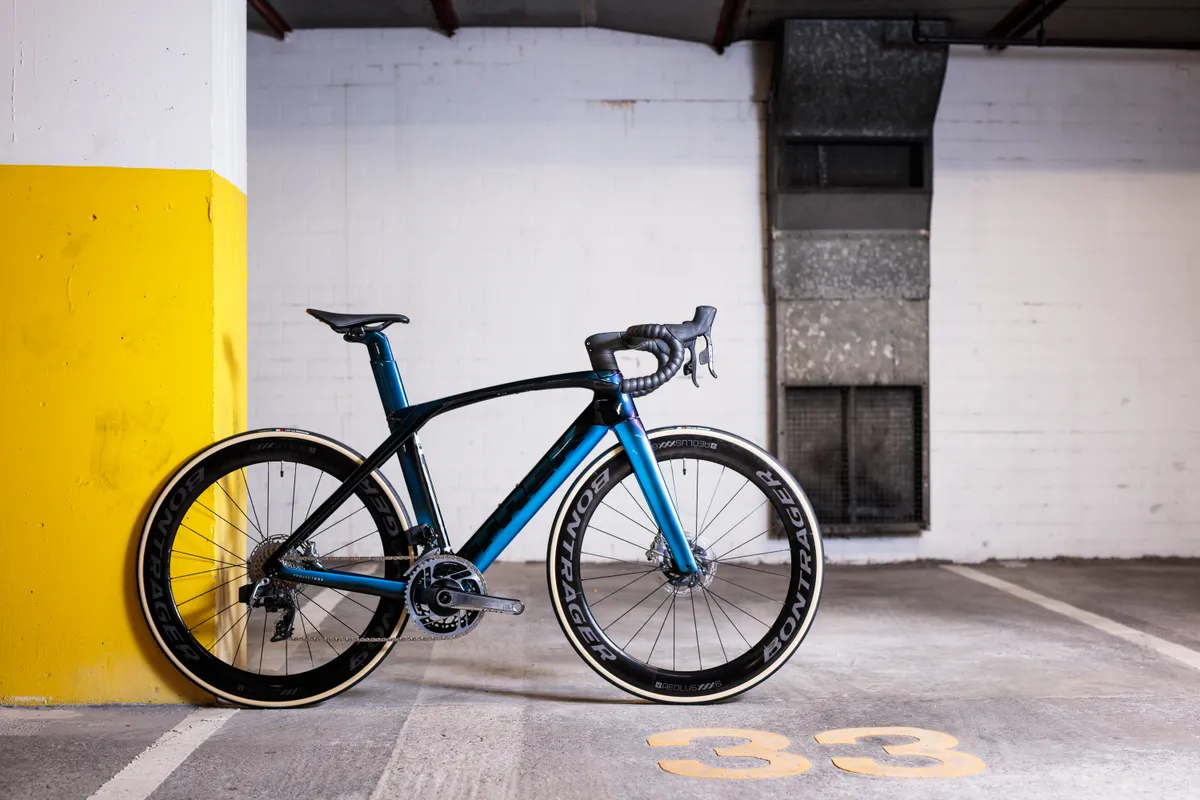
Bernhard Isopp, lecturer and researcher in the department of science, technology and society at the Technical University of Munich, who specialises in climate change communication and policy, has openly criticised the Trek report. He has queried the focus on high-end bikes, which he says constitute luxury products.
“There’s always this concern about greenwashing and turning sustainability discourse into a marketing opportunity,” says Isopp, “and I think in some regards Trek went in that direction when there are clearer ways they could have shown their commitment to sustainability than doing the carbon footprint of a £10,000 mountain bike.”
To highlight the issue with saying a bike can offset carbon emissions when it doesn’t actually replace a car, Isopp suggests another comparison:
“It wouldn’t make sense to compare the CO2 [emissions] per kilometre travelled on downhill skis to cars and to then say the skis are more environmentally friendly.”
But Bjorling argues the statistic is really just to get people thinking:
“We know that most people who buy a Rail are going to be driving them to a trail and riding them. What we were trying to do there was focus on consumer education.”
Away from shifting carbon offsetting onto the end consumer, Trek says increasing the amount of recyclable material in its products could lead to a significant reduction in emissions.
Trek lists a number of smaller components such as bottle cages, computers and handlebar grips that use alternate materials, but larger items are absent.
According to the report, the most polluting part of the bike tends to be the frame. But when it comes to cutting the emissions of frame production, the picture the report and Bjorling paints is of business taking precedence over sustainability.
The report says the percentage of recycled material in its aluminium frames has actually dropped due to the need to meet consumer demand.
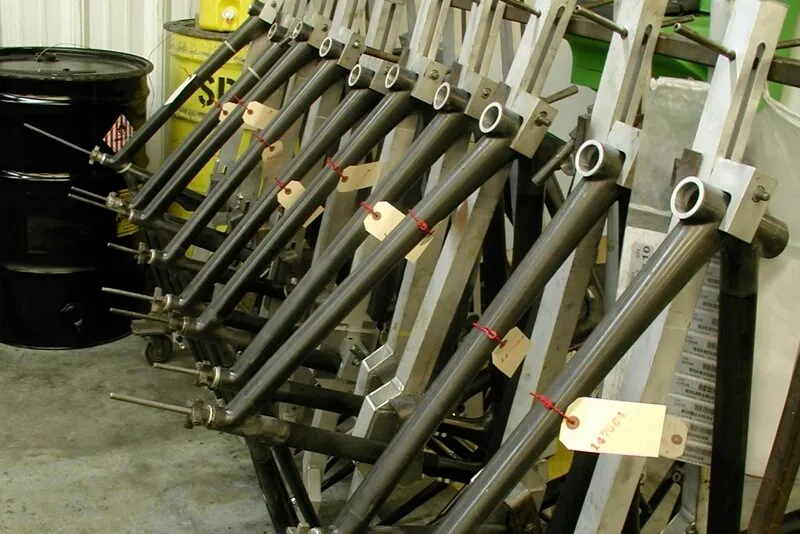
Bjorling also highlights the difficulties faced with carbon fibre:
“The thing about recycling carbon fibre is it’s really hard to do. There aren’t that many companies out there.
“We worked with a company in the United States who would take carbon fibre – like warranty frames and trimmings from the manufacturing sector – and they were able to break it down and do injection moulding for car parts and things like that.”
The problem, in the end, Bjorling says, is “they couldn’t make it a sustainable business.”
For comparison, Dennyson says Shift Cycling Culture has had conversations with some of the biggest bike builders who are looking at alternate materials, but emphasises it is “early days”.
“It would be nice to accelerate the whole process,” Dennyson says, “and make sure that this isn’t happening in 2035, and it’s happening next year.”
So are cycling brands doing enough?
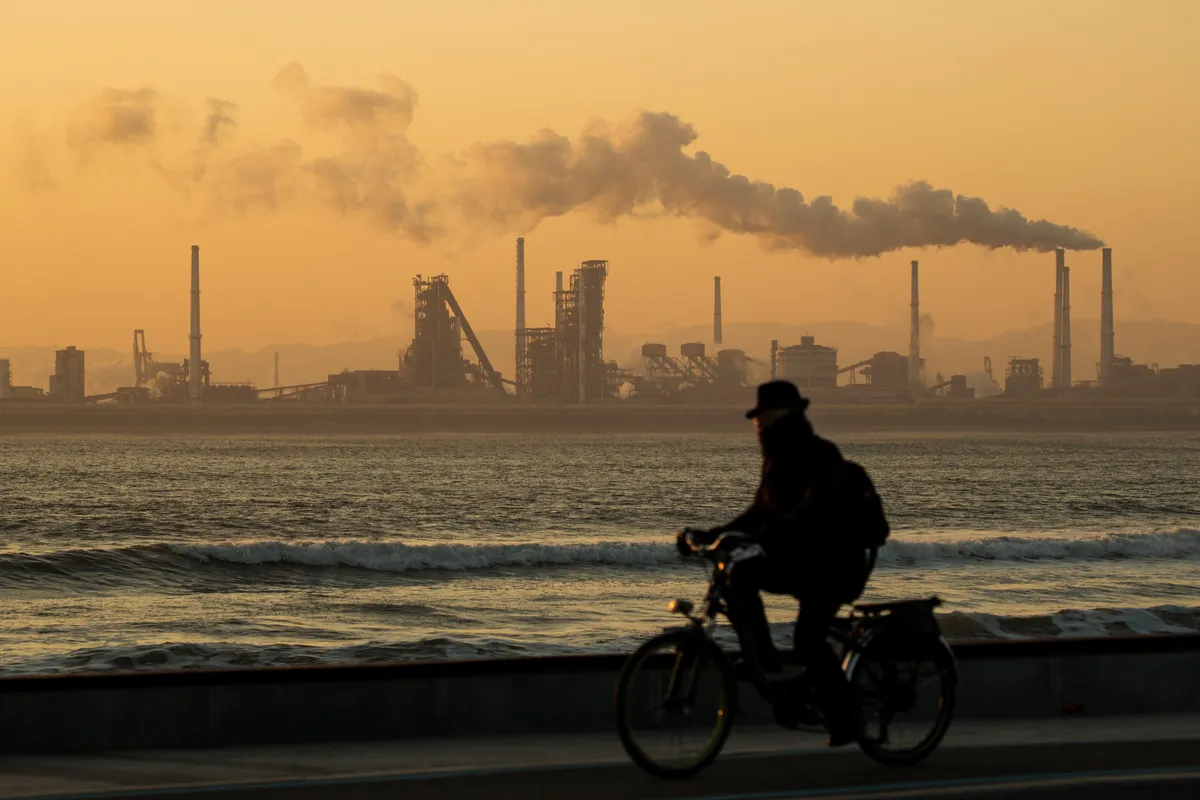
The picture the Climate Commitment letter and the Trek sustainability report paints is one of an industry finally beginning to acknowledge its environmental impact, having long escaped scrutiny due to the emission-busting potential of what it makes.
On some levels, this is unavoidable: there is no getting away from climate change, however green your product may or may not be. As Isopp puts it, “they have to say something. What else could they do at this point?”
How effective these commitments prove to be has a lot to do with urgency and scale, as well as the willingness of brands to change and to be accountable.
There is a temptation to call for change now, but the time frame outlined in the Climate Commitment feels reasonable when you consider Trek began the journey to create its report and plan a few years ago.
Seeing brands come together with a collective vision for reducing emissions is also promising.
On one level, having brands working together could lead to the germination of an industry body to tackle emissions. On another, it could enable brands to take on crucial supply chain emissions, which, due to their complexity, may require competitors to work together.
Working towards shared aims will also make it easier to hold brands accountable and for direct comparison between similar companies, as opposed to people looking outside the industry for perspective on how cycling brands are doing.
However, there are still many difficult questions to answer, which are pertinent to cycling, and for other industries too.
Much of the cycling industry is driven by a desire to create ever faster, lighter and better-performing products.
“With every innovation at the moment,” Dennyson says, “you just make things out of date, and you’re left with a shed full of parts.”
While efforts can and should be made to make parts more cross-compatible and to find ways to recycle and bring materials back into production, the difficulty of recycling materials such as carbon fibre and electric bike batteries poses a huge challenge.
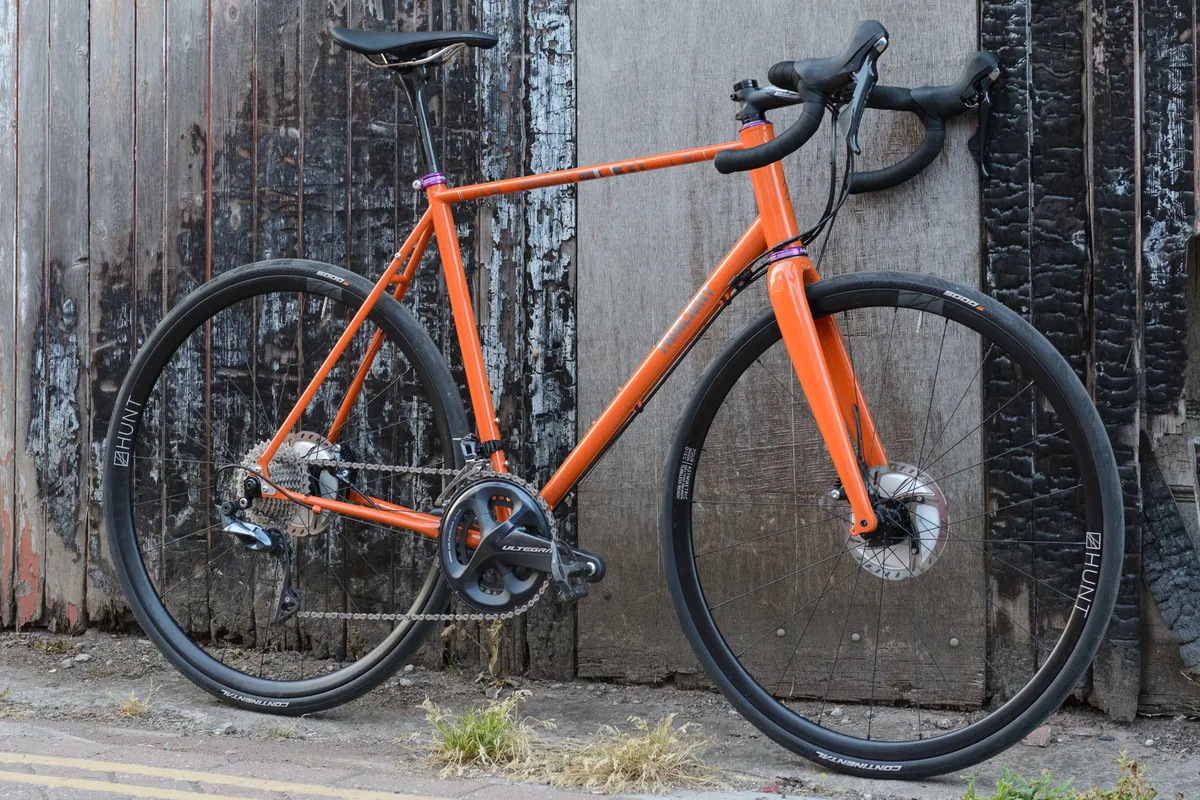
It is unfeasible to imagine a brand such as Trek giving up carbon fibre, but consciously shifting to materials such as aluminium alloy and steel that can be recycled might prove a necessity rather than a choice, even if achieving green steel might be a monumental task.
There is also no getting away from the fact brands perpetuate a cycle of neophilia and relentless consumption, so things do have to change, and they have to change fast.
Even though yearly product cycles may fly in the face of making more sustainable and longer-lasting products, Dennyson says this model could potentially play a part in cutting emissions.
Dennyson explains that brands “are constantly in an innovation cycle because they are looking to bring out the newest model every year.”
According to Dennyson, the speed of innovation could lend itself to the bike industry quickly developing more recyclable products to mean less material ends up obsolete and wasted.
While the Climate Commitment letter, and Trek’s report, are welcome, they should really be treated as just the beginning.
“When it comes to the climate,” Isopp says, “what’s most crucial right now is really short-term, concrete actions.”
Will the brands who signed the letter release the promised reports in 2023 and build action plans off the back of them? Will Trek fulfill its 10 promises? Will, rather hopefully, the innovation cycles brands operate in deliver sustainable manufacturing processes? And will all of this happen by 2050, the date outlined for net-zero by the Paris Agreement?
While we have an idea of what some of these actions might look like, we’ll have to wait and see whether these things happen and if the bike industry lives up to its commitments. But in the meantime, it might be worth keeping one proverb in mind: “to know and not do is to not know.”
